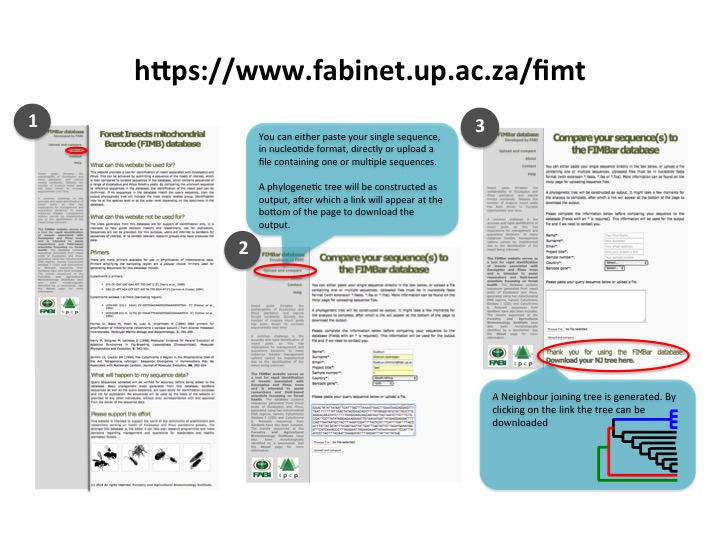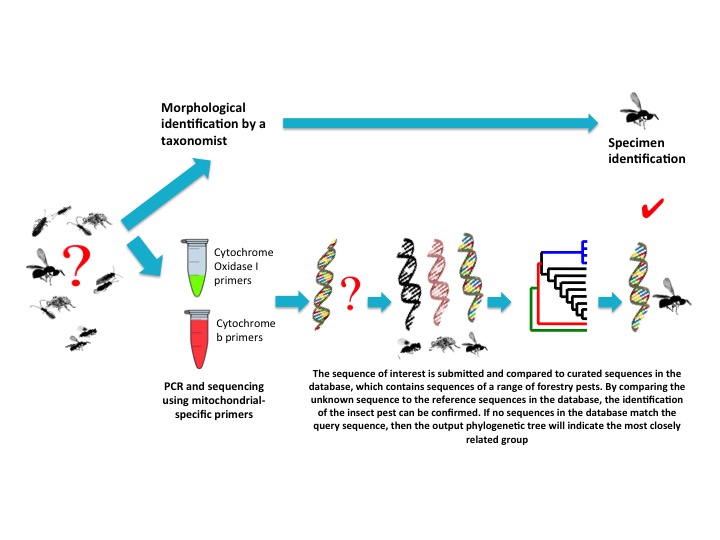An online DNA sequence database to support forest-pest management 2018-11-29
Insect pests challenge the sustainability of both natural forests and plantation forestry worldwide. Globally the number of invasive insect pests has been shown to increase rapidly in recent years. A common challenge in dealing with these pests is the accurate and rapid identification, which has implications for management and quarantine decisions. In many instances feasible management options cannot be implemented due to the lack of accurate identification of the insect involved.
The FIMT website serves as a tool for rapid identification of insects associated with forests, in particular Eucalyptus and Pinus species, and is intended to assist researchers and field-based scientists focussing on forest health. Identification of insects can be achieved by submitting a sequence of an insect of interest, which is then compared to curated sequences in the database, which contains sequences of a range of forestry pests. By comparing the unknown sequence to reference sequences in the database, the identification of the insect pest can be confirmed. If no sequences in the database match the query sequence, then the output in the form of a phylogenetic tree will indicate the most closely related group. Identification may be at the species level or at the order level depending on the specimens in the database.
The database contains sequences generated from insect pests associated with forestry, using two mitochondrial DNA regions namely Cytochrome Oxidase I (COI) and Cytochrome b sequences. Relevant sequences from GenBank have been included. The insect sequences at the Forestry and Agricultural Biotechnology Institute (FABI) have been morphologically identified by a taxonomist.
The output generated from the database is for support of insect identifications only and it is intended to help guide decision makers and researchers.
The FIMT website can be accessed at the following link https://www.fabinet.up.ac.za/fimt. Detailed guidelines regarding sequence submission are available on the website.



